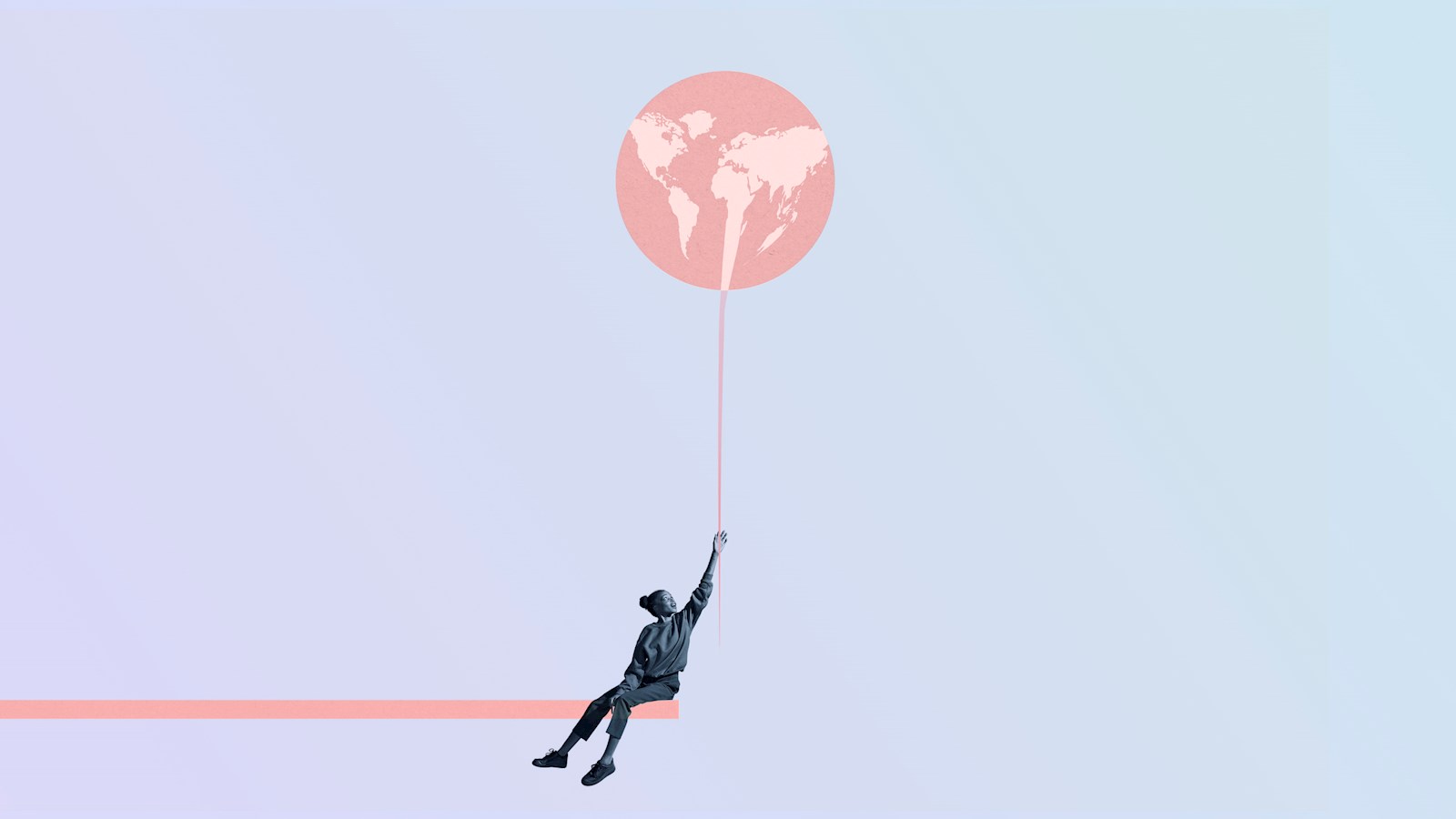
Show this article in Chinese, French, Portuguese (BR), Spanish
Women must be part of the climate conversation
The UN estimates that 67% of decision-making roles about climate worldwide are occupied by men. That number must change.
Women must be part of climate decision-making because they are disproportionately impacted by climate change. And we worry generally about women’s roles as leaders for a very good reason: the World Economic Forum has indicated that the pandemic has set representation of women leaders back by 68%.
WPP’s Chief Sustainability Officer, Hannah Harrison, sets the scene: “Particularly in the Global South countries, there’s unequal responsibility on girls and women for securing food, finding water, finding firewood, and caring for the young and the elderly. We're already seeing that, whenever there's a heatwave, drought, severe storm or flood, it's girls and women who suffer the most.”
Natural disasters mean women must travel further to secure scarce food and safe water, and they may have to remain behind during climate-related evacuations to care for the vulnerable – but this is when women gather their valuable insights.
“Women's caregiving and provider roles give them an incredibly deep understanding of how climate change is impacting their community,” says Harrison. “In the Global South, women also have really extensive knowledge of their natural environment and resources. They have this superior knowledge, but they're often not the people making the decisions.”
When women are underrepresented in creating climate-related solutions, we are potentially excluding people with the knowledge needed to mitigate and adapt to climate change.
So, let’s think locally and globally
“Women are, in many cases, best placed to identify and implement solutions to adapt to and mitigate climate change,” says Harrison. And why are they not in those roles in large enough numbers? The answer to that question requires some understanding of structural issues.
“According to the OECD, only 3% of aid to address climate change is targeted at gender equality. What is more, the Feminist Action for Climate Justice coalition (convened by UN Women) found that just 3% of philanthropic environmental funding supports girls and women's environmental activism,” says Harrison. “And let’s remember that most female-led organisations that are trying to combat climate change are quite small, and they often have difficulty accessing climate finance providers, because, typically, some of those big funds invest in large-scale projects that deliver scale and impact.”
So, on the one hand, women are not supported well enough through philanthropic means to become activists in this space, and they thereby lack the means to grow their arguments. And on the other hand, project funding tends to be at the top end, and accessing it requires organisational clout, business constructs and group-think – all of which is lacking amongst women impacted by climate change on the ground.
“It's an emergency, right?” says Harrison, referring to the large pots of green finance emerging from investors. “We need to act, and we need to scale, but then I also wonder if those tackling the climate crisis need to rethink our mindsets a little and search for solutions with the greatest impact – which doesn’t always mean the greatest price-tag,” she adds.
So how do we finance the ideas emanating from those community-oriented women who know first-hand the intricate interactions between biodiversity, climate, community, and socio-economic policy? And how do we even reach these small, localised projects?
We need initiatives to recognise that solutions can, at the same time, be both local and global, and that local solutions, in particular, must include all voices, regardless of gender or ethnicity. Project Drawdown, says Harrison, is a case in point. It is a non-profit organisation that seeks to help the world reach “drawdown” whereby levels of greenhouse gases in the atmosphere stop climbing and start to decline. It recognises that climate solutions are both local and global, and that the transition to clean energy presents opportunities for education and employment for communities everywhere.
“One of the first big projects Project Drawdown identified as making the biggest difference is health and education, specifically of girls,” points out Harrison. “It reckoned that 85.42 gigatons of CO2 equivalent could be reduced or sequestered between 2020 and 2050, by educating women.”
Why? Because women are on the front line. This action might be less obvious to policymakers and funders than to activists and community members themselves, which is why we need to think at both extremes and everything in between.
The creative industry absolutely has a role
“As creatives, communicators and marketers, we absolutely have role to play in advancing a gender-balanced climate agenda,” says Harrison. “We are in an incredibly privileged position as an industry because of our creativity, our ability to bring people together, and being at the heart of so many issues that affect society. Marketing is all about shifting opinion and changing behaviour. And we can do that at scale.”
That is what's needed here. “We can help close the value-action gap. We can make sustainable and more equitable lifestyles desirable and, hopefully, more commonplace,” she says.
Harrison points out that we can learn the lessons of the pandemic. It taught us the impact of localising consistent messaging to drive consistent action: wash your hands, maintain social distancing, and so on. But the pandemic has also pushed 47 million more women into extreme poverty, according to UN Women.
The lack of vaccines and funding for Global South countries prevented many delegates and activists from taking part in the negotiations at COP26. “Once again, the people who are on the frontline, who are most impacted by this, didn't have a seat at the table,” says Harrison.
“These are the people who are already having to adapt to climate change, often with limited resources. Or whose long, deep-rooted traditions and invaluable knowledge of how their ecosystems work comes under threat from rural to urban migration and persecution or discrimination. We must not be dismissive of this knowledge; we must protect it and, in turn, safeguard places rich in biodiversity. Places many people call home.”
published on
21 April 2022
Category
More in Communications

How to build your brand in-game
A new research report from WPP and SuperAwesome

Mechanisms that Matter – Inside our partnership with Audible
How do you take a huge client like Audible from 22 agencies to one thriving networked team?

Healthcare communications – diverse, dynamic & different
Communicating about health and healthcare in APAC requires a nuanced and balanced approach

